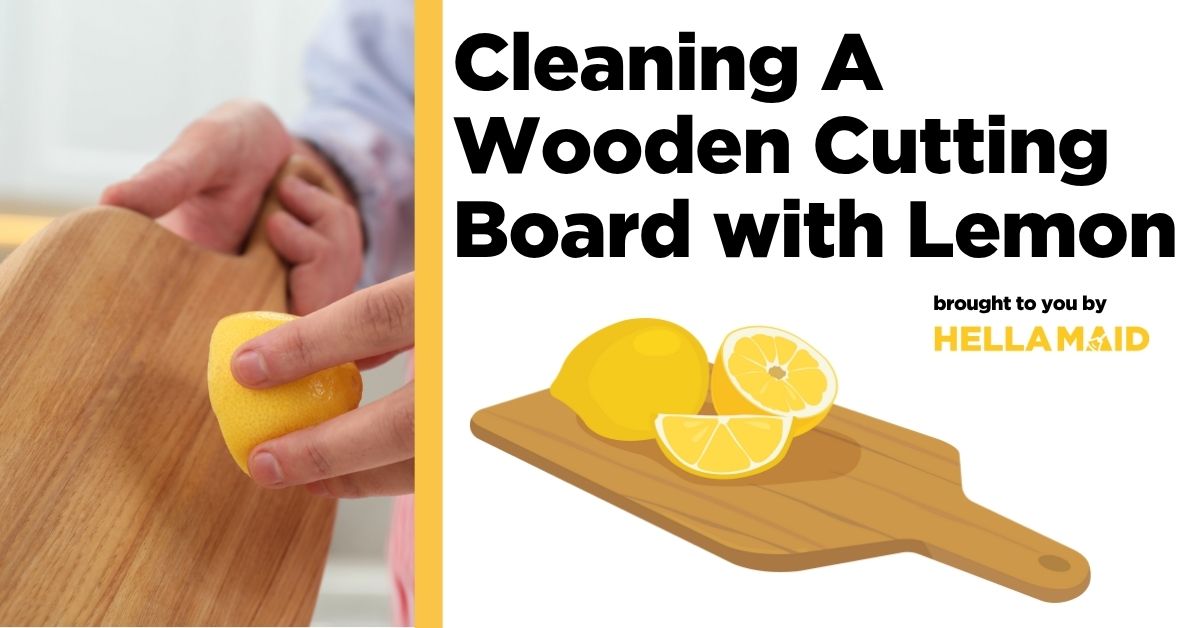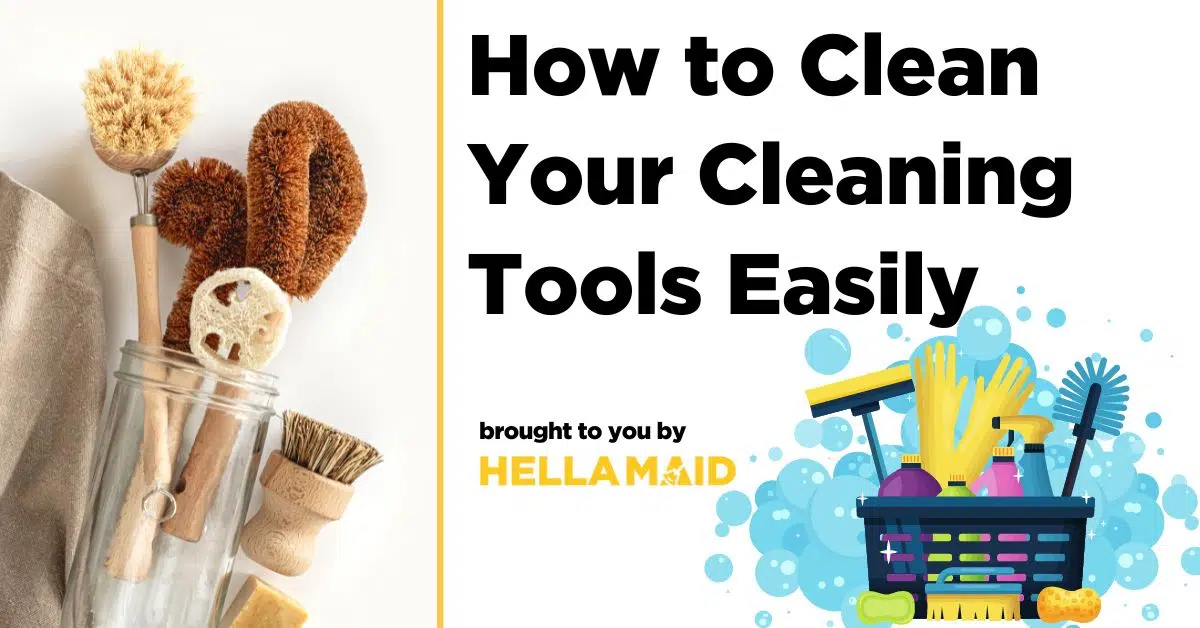A cozy kitchen filled with the smell of fresh ingredients is one of life’s simple joys. But behind every delicious dish is a well-used cutting board, especially those beautiful wooden ones we all love. To keep them fresh and safe to use, it’s important to know how to clean a wooden cutting board with lemon, a natural solution that’s both simple and effective. It’s a method that uses what you likely already have at home and helps protect your food from hidden bacteria.
In this guide, we’ll walk you through this easy, chemical-free cleaning method so you can keep your kitchen looking and smelling its best.
Why Cleaning Wooden Cutting Boards Matters

Your cutting board sees a lot of action. Raw chicken one minute, fresh herbs the next. Without proper cleaning, it becomes a bacterial playground that could make your family sick.
Here’s something fascinating: research shows that wooden cutting boards actually have natural antibacterial properties. Within three minutes of contamination, 99.9 percent of bacteria on wooden boards had died, while plastic boards showed no bacterial reduction. Pretty impressive for a piece of wood, right?
But here’s the catch, this natural defense only works when your board is properly maintained. A dirty, neglected wooden board loses these protective qualities and becomes just as dangerous as any other contaminated surface.
Food safety experts are clear on this: clean your cutting board after every single use. It’s not optional if you want to keep foodborne illnesses out of your kitchen.
Benefits of Using Lemon to Clean Wooden Cutting Boards
Why choose lemon over store-bought cleaners? Mother Nature packed this sunny fruit with some serious cleaning power.
The Science Behind Lemon’s Cleaning Magic
Lemons are loaded with citric acid, which is nature’s answer to antibacterial cleaners. This citric acid is both antibacterial and antiseptic, meaning lemons can kill bacteria and remove mold and mildew without the harsh chemicals found in commercial products.
But that’s not all. The natural oils in lemon peels act as a gentle conditioner for your wood, preventing it from drying out and cracking over time.
Here’s what lemon brings to your cleaning routine:
- Powerful stain removal – Those stubborn garlic and onion marks don’t stand a chance
- Odour elimination – Say goodbye to lingering fish or meat smells
- Natural brightness – Restores your board’s original warm wood tone
- Safe for food prep – No worrying about chemical residue on your cooking surface
- Budget-friendly – Much cheaper than specialty cleaners
- Eco-conscious choice – Zero harsh chemicals going down your drain
The best part? Your kitchen will smell like a fresh citrus grove instead of a chemical factory.
Step-by-Step Guide: How to Clean a Wooden Cutting Board with Lemon
Ready to transform your cutting board? Let’s dive into the simple process that will make your board look and smell brand new.
The Classic Lemon and Salt Method
This is your go-to technique for regular cleaning and light stain removal.
What you’ll need:
- 1 fresh lemon (juicy ones work best)
- 2-3 tablespoons coarse salt (kosher or sea salt)
- Clean kitchen towel
- Warm water
The simple process:
- Start fresh – Give your board a quick rinse with warm water to remove any loose bits
- Salt the surface – Generously sprinkle coarse salt across the entire board. Don’t be shy, you need enough to create a good scrubbing surface
- Lemon power – Cut your lemon in half and use it as a scrubber. Work in circular motions, really pressing down to release that citrusy goodness
- Let it work – Here’s where patience pays off. Let the lemon juice sit for 5-10 minutes to break down bacteria and stains
- Rinse away – Wash off all the salt and lemon juice with warm water
- Dry thoroughly – Pat dry with a clean towel, then let it air dry completely before storing
Deep Cleaning for Stubborn Problems
Some stains and smells need extra attention. Here’s how to tackle the tough stuff.
For persistent stains and odors:
- Make a power paste – Mix fresh lemon juice with baking soda until you get a thick, spreadable paste
- Target the trouble spots – Apply this paste generously to stained or smelly areas
- Wait it out – Give it 15-20 minutes to really work its magic
- Scrub with purpose – Use your lemon half to work the paste into the wood grain, focusing on problem areas
- Final cleanup – Rinse thoroughly and dry as usual
This method works wonders on those seemingly permanent garlic stains and that fishy smell that just won’t quit.
Extra Care Tips for Wooden Cutting Boards
Taking good care of your wooden cutting board isn’t complicated, but timing matters.
How Often Should You Clean It?
Daily cleaning schedule:
- Light rinse and wipe after each use
- Full lemon cleaning once a week
- Deep conditioning with oil once a month
Heavy-duty schedule (for serious cooks):
- Immediate deep clean after raw meat
- Lemon treatment after pungent foods like garlic or fish
- Weekly oil conditioning if you use it daily
Think of it like skincare for your cutting board, consistent care prevents bigger problems down the road.
When to Sanitize vs. When to Deodorize
Sanitize immediately when:
- Raw meat, poultry, or seafood touches the surface
- You’re switching from raw to ready-to-eat foods
- Visible stains or discoloration appear
Deodorize regularly when:
- Lingering smells stick around after washing
- You’ve been chopping strong-smelling ingredients
- It’s part of your weekly maintenance routine
The beauty of the lemon method? It handles both jobs at once.
How to Keep the Wood in Good Condition
Your wooden board needs moisture to stay healthy, just like your skin needs lotion.
Monthly oil treatment: Apply food-grade mineral oil or specialized cutting board conditioner after your deep lemon cleaning. This keeps the wood flexible and prevents cracking.
Smart storage habits:
- Stand it upright so air circulates around it
- Keep it away from heat sources like your stove or dishwasher
- Never let it sit in standing water
Warning signs it needs oil:
- The wood looks dry or grayish
- Water soaks in instead of beading up
- You notice tiny cracks forming
Common Mistakes to Avoid
Even with good intentions, these common errors can ruin your wooden cutting board.
The absolute no-nos:
- Never use bleach – It’ll dry out and damage the wood fibers
- Skip the dishwasher – The heat and moisture will warp and crack your board
- Don’t soak it – Extended water exposure causes swelling and cracking
- Avoid steel wool – It’ll scratch and gouge the surface
- Never store wet – Moisture trapped in wood leads to mold and bacteria
Lemon-specific mistakes to avoid:
- Using old, dried-out lemons – Fresh juice is where the cleaning power lives
- Forgetting the salt – You need that gentle abrasive action
- Rushing the process – Let that citric acid work for the full time
- Incomplete rinsing – Leftover acid can actually dry out your wood
Temperature shock: Don’t subject your board to extreme temperature changes. Room temperature water is your friend.
Alternative Natural Cleaning Methods (If You’re Out of Lemon)
Life happens, and sometimes you’re fresh out of lemons. These natural alternatives will keep your board clean until your next grocery run.
- White vinegar solution: Mix equal parts white vinegar and water in a spray bottle. Spray, wait 5 minutes, rinse, and dry. The smell fades quickly, leaving your board fresh.
- Baking soda scrub: Make a paste with baking soda and just enough water to bind it. Scrub gently, let sit for 10 minutes, then rinse well. Great for tough stains.
- Plain salt treatment: Sometimes simple is best. Coarse salt with a little warm water creates an effective scrub that removes surface bacteria and debris.
- Hydrogen peroxide for stains: For really stubborn discoloration, apply 3% hydrogen peroxide directly to the stain. Let it bubble for a few minutes, then rinse thoroughly.
While these methods work in a pinch, lemon remains the champion for its combination of cleaning power, pleasant scent, and wood-conditioning properties.
Conclusion
Your wooden cutting board doesn’t need harsh chemicals to stay clean, fresh, and safe. With just a lemon, some salt, and a few minutes of your time, you can maintain a cutting board that looks great and performs beautifully for years to come.
The natural antibacterial power of citric acid, combined with lemon’s deodorizing and stain-fighting abilities, makes this method both effective and enjoyable. Plus, your kitchen smells amazing afterward, definitely a bonus!
Remember the golden rules: clean after every use, deep clean weekly with lemon, and condition monthly with oil. Treat your wooden cutting board well, and it’ll be a faithful kitchen companion for decades.
Let Us Help Keep Your Kitchen Spotless
If cleaning feels like one more thing on your to-do list, we’re here to help.
At Hellamaid, we provide trusted residential and commercial cleaning services across many major cities in Canada. From kitchens to full homes and offices, we take care of the details so you don’t have to.
Explore our professional cleaning services today and let’s make your space shine again, naturally and beautifully.
































